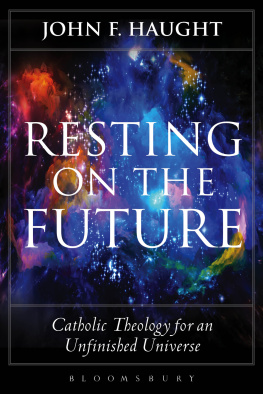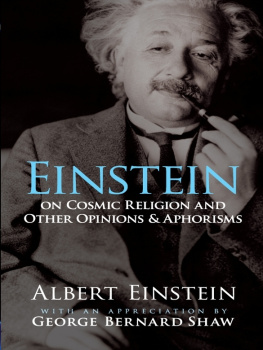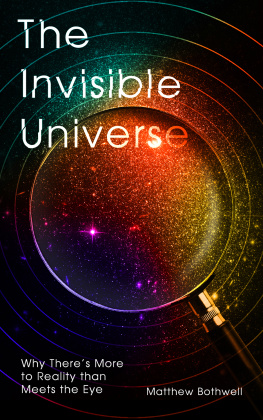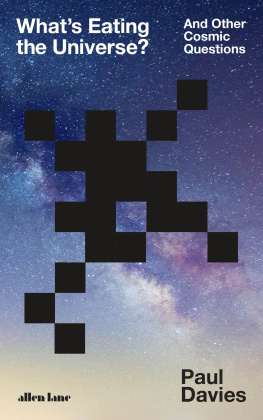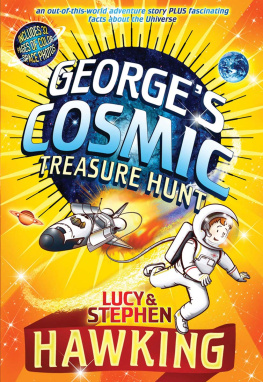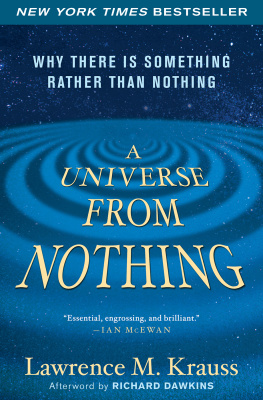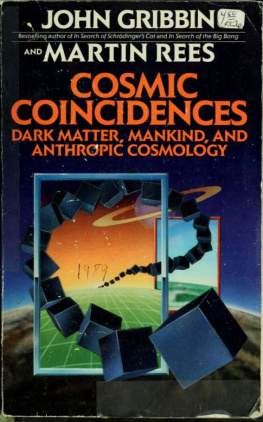THE NEW COSMIC STORY
THE NEW COSMIC STORY
Inside Our Awakening Universe

JOHN F. HAUGHT


Published with assistance from the Mary Cady Tew Memorial Fund.
Copyright 2017 by Yale University.
All rights reserved.
This book may not be reproduced, in whole or in part, including illustrations, in any form (beyond that copying permitted by Sections 107 and 108 of the U.S. Copyright Law and except by reviewers for the public press), without written permission from the publishers.
Yale University Press books may be purchased in quantity for educational, business, or promotional use. For information, please e-mail (U.K. office).
Set in Janson Text type by Integrated Publishing Solutions,
Grand Rapids, Michigan
Printed in the United States of America.
Library of Congress Control Number: 2017930761
ISBN 978-0-300-21703-2 (hardcover : alk. paper)
A catalogue record for this book is available from the British Library.
This paper meets the requirements of ANSI/NISO Z39.48-1992 (Permanence of Paper).
10 9 8 7 6 5 4 3 2 1
To my grandchildren
Christopher, Caitlyn, Dominic, Colin, and Jacob
Contents
Acknowledgments
I WISH TO THANK John Loudon for his encouragement and support throughout the writing of this book. It has been a pleasure working with him and benefiting from his wisdom. Thanks also to editors Heather Gold and Dan Heaton. I wish that every writer could have as perceptive and learned an editor as Dan has been in this books production. Thanks also to Philip Novak, Charles A. OConnor III, Robert Ulanowicz, Elizabeth McKeown, and especially my wife, Evelyn, for reading the manuscript, for their generous encouragement, and for their helpful suggestions. Thanks, finally, to the American Teilhard Association for the opportunity to deliver the annual Teilhard Association Lecture in New York in 2014 and to share with its members some of the ideas adapted here in
Introduction
OVER THE PAST TWO centuries scientists have found out that the universe is a story still being told. During the past hundred years they have learned that our Big Bang universe began billions of years before life appeared and even more billions before humans arrived on planet Earth. New scientific awareness of the long cosmic preamble to human history has inspired attempts recently to connect the relatively short span of our own existence to the larger cosmic epic. Sometimes these efforts are referred to as Big History. Big History seeks, as best it can, to tell the story of everything that has taken place in the past, including what was going on in the universe before Homo sapiens arrived.
How consequential Big History will turn out to be in the long run is debatable. So far most versions have stapled the human story only loosely onto scientific accounts of the earlier cosmological and biological chapters. They have seldom looked deeply into how one stage interpenetrates the others. Books on Big History typically start off with several chapters summarizing material that readers could pick up from any good popularization of scientific discoveries. Then they follow this up with content that any reliable summary of human history has already made available. Missing from their extended narratives is a dramatic interlacing of the various epochs. Above all, what is lacking is sustained reference to what I will be calling the inside story of the universe.
Big History scholars locateand deflatethe human story by placing it against the backdrop of the universes spatial and temporal immensity. This is a useful point of view, but not the only one. The universe, after all, includes subjects, hidden centers of experience whose significance cannot be measured by science or captured by purely historical reporting. What is needed, I believe, is a narrative that tells the whole cosmic story, inside as well as outside. Startlingly absent from Big History so far, for example, is a sense of how religion fits into the cosmic story. This book is an attempt to address this omission. In it I argue that we cannot expect to understand well what is going on in cosmic history apart from a careful examination of what goes on in the interior striving of life that reaches the summit of its intensity in humanitys spiritual adventures.
Religious experience is part of the inside story of the universe. For thousands of years religious sentiments have come down from one human generation to the next packaged in symbolic forms whose meaning is mostly inaccessible to science. Yet the emergence of religious subjectivity, though hidden, is just as much part of the universe as is the formation of atoms and galaxies. Big History, following the methods of physical science, characteristically pays little serious attention to religion and other things going on inside. My objective here then is to look inside the story of the universe without ignoring the outside. I am convinced that any big history that lives up to its name needs to correlate what is going on objectively with what is going on subjectively.
Subjectivity, as far as we can tell, burns most feverishly in humans. It has also been emerging more quietly in the story of life and implicitly throughout the whole cosmic journeyfor billions of years prior to our own recent arrival. The cool detachment of science, however, never feels fully the heat of inner experience and the dramatic quality of its emergence. I believe then that the scientific approach idealized by Big History needs to be supplemented by a wider attentiveness and a more sweeping empiricism than science usually employs. A really big history must take into account the interior dimension of living, thinking, and worshiping subjects and not just outward, publicly available events.
Big History is aware of religion externally as a social and cultural phenomenon and as a motor for historical change, but its outside perspective passes over religions dramatic inner substance. Along with many other contemporary intellectuals, authors of Big History usually assume that science provides the widest and most reliable pathway to knowledge. A sizable number of them take for granted that the world available to science is really all there is. Subjectivity in that case is scarcely distinguishable from nothingness, and religion is no more than a filmy human concoction that evaporates altogether when subjected to scientific examination.
From the start, however, the cosmic story has carried with it, at least faintly, a scientifically inaccessible lining of insideness. As we shall see, the cosmos is in fact a story of emerging interiority. In the case of humans, subjectivity has become palpably manifest in our many passions, our sense of freedom, ethical aspiration, and aesthetic sensitivity, but especially in our longing for meaning and truth. So hidden is this interior dimension that scientific materialistsfor whom measurable matter is all there isare unable or unwilling to tell the whole cosmic story. They pass over in silence the most interesting aspect of the dramanamely, the emergence of an interior world consisting of sentience, intelligence, moral aspiration, and religious passion. Materialist thinkers generally ignore the fact that nature includes an undeniably real inside story composed of struggling subjects who yearn for a kind of satisfaction that sciences outside point of view fails even to notice, let alone understand.
Next page

